






of







of







of





















Uzerliktepe settlement is one of the ancient human settlements of the Mil plain and one of the archaeological monuments of Karabakh that dates back to the Middle Bronze Age (first half and middle of the 2nd millennium BC).[1] The settlement is located on the east side of Aghdam city of Azerbaijan, in a suitable position from a strategic perspective.[2] Due to the ancient artifacts found during the archaeological investigation in the Uzerliktepe settlement the area is considered as the “First man’s population in the city type”, which is significant findings in terms of archaeology not only for Azerbaijan, but also for the entire Caucasus.[3]
The monument is situated on a 10 meters high hill. It is noteworthy to mention that, as in all of Azerbaijan, the ancient inhabitants of Karabakh used mainly the tall hills when selecting their dwelling places during the tribal period. The reason for this is defense from any military attack. During the Soviet Union, the settlement attracted the interests of various scholars from Azerbaijan and Russia. There was a dispute whether this settlement located in the hill is a human – created artificial mound or a natural hill. Therefore, for ending this dispute A.A. Gessen, a scientist from Petersburg, suggested carrying out the archaeological investigation in the Uzerliktepe settlement. As a result in 1950s, the excavations began in the settlement. Archaeological excavations were carried out on a 484 m2 area. The widest range of the settlement from north to south is 202 m. The thickness of the cultural layer on the natural hill is 3 m.[4]
As a result of the archeological excavations it has been discovered that Uzerliktapa has been inhabited for many centuries, and as a result of this habitat, a three-meter-long cultural layer has emerged. During the excavations, archaeologists found out that the cultural layer of the Uzerliktepe settlement is divided into three horizons. “In each horizon were discovered remains of wooden houses plastered with clay. Houses were based on wooden pillars. Roofs were also made of wood”.[5] According to Kamala Imranly “the residential area contained sickles, household wells, earthenware crockery, grater, mortars, earthenware churn piece, bronze-wares, different red crockery of black baking with geometrical patterns, an earthenware figure of a woman and other artifacts belonging to the population engaged with agriculture, cattle breeding, and gardening”.[6]
The first layer is characterized by many holes made for different purposes. Some of them had been filled with kitchen waists and ashes. Some holes had chaff in them and had been used for keeping animals. Remainders of a living house made from pillars had been revealed in this layer. Its walls were built of thick sticks and plastered with clay. The roof of the building was covered with tree barks; the floor was covered with a bast mat. There were broken clay plate pieces found on the floor; clay stove remainders in the inside of the fireplace has been revealed too. Groups of stone tools, graters, and stone casts had been found from the places near the fireplace made of river stone. This house was characterized by K.X. Kushnareva as a ‘molder’s house’. Clay things found from this layer had been divided into two groups: living and kitchen plates. Ceramic products were made in gray or black color. Home utensils had been polished well. The plates were decorated with different sketch ornaments. The thickness of the civilized layer in Uzerliktepe is 1,5 meters; it is rich with black patterned ceramics, remainders of the fireplace, farm wells, archeological materials. Grandiose defense walls surrounding this settlement had been found in this layer. The length of the wall built from the air-brick is 35 ms; the width is 3 m; the height is 1 meter. One of its entrance doors had been strengthened. Remainders of the houses with land floor and tree ruffs have been revealed inside of the defense wall. The settlement had been in a strong fire two times during this period of time. As a result of the destruction of the houses and forming the civilized layer, the defense wall lost its importance and was destroyed. Despite the quite bad condition of the remaining, land floors and home things have been found out in this layer. Ceramics of the second and the third layer have been accepted by K.X.Kushnaryeva as one complex. Considerable progress had been in preparing clay products at this time. Sketch ornament used in the lower layer had been substituted with a more perfect ornament.[7] Regarding the horizons of the Uzerliktepe settlement while referring to Karin Kushnareva, who defined three stratified building horizons in the 1950s, Antonio Sagona in his book The Archaeology of the Caucasus: From Earliest Settlements to the Iron Age indicates:
The earliest deposits, Level I, were mostly characterized by numerous pits, serving a variety of functions, and a sub-rectangular wattle-and-daub house, supported on a framework of thick posts and roofed with wooden slabs. The house had a beaten clay floor, originally covered with reed matting, and a hearth within and around which was a portable clay oven, stone pestles, grinders, and remnants of metalworking, including a clay crucible and slag. Later in the history of the village, as revealed by Level II, the community built a massive curved defensive wall. Made of large mud-brick slabs, and measuring 3 m across its width, the wall enclosed the entire settlement, which did not reveal any architectural changes. By the end of this period, Level III, the wall fell into disuse, and in the upper horizon, the community shifted their activities to the north part of the settlement. Although poorly preserved, these upper deposits had fewer pits and some large areas of floor surfaces.[8]
One of the main heritages that attracted attention during the archaeological excavations in the settlement was the remains of a large volume of bricks. As indicated in previous paragraphs residential houses in Uzerliktapa are mainly built of bricks. The floor of the houses is smoothly watered with clay. Each house has cobblestone holes. Besides, many holes were built inside the dwellings, and sometimes in the yard. According to researchers, these pits, which are of different sizes, are often used to store food and, in a few cases, for the garbage cans.
Several remnants of the ancient culture of the ancient inhabitants of Karabakh have been discovered. Many of the hollows and houseplants, as well as wheat and barley remnants were found in clay vessels. After laboratory analysis it became clear that the remains of this wheat were cultivated 4-5 thousand years ago by cultivation. In addition, wheat and barley were grown together in most cases. It also proves that the stone tool used in the harvesting of the planted grain was found. The stone sickle cuts the smaller stones and equips them to the jawbone of the large horned beetle. Here, stone-made arrows, stone blades, many pagan battles, and grasshoppers were discovered. The idol found in the stonework made of stone in Uzerliktepe settlement proves that idolatry has spread among the inhabitant of the settlement.[9]
One of the great finds of the settlement is the remains of grape seeds, which proves that gardening has an ancient history in that region. Along with the grape seeds, stone tools for vine production and different cultural material samples that were found at Uzerliktepe settlement during excavations showed that vine-growing had played a significant role in the lives of farmers of the settlement. According to Musayev and Akparov “Grape seeds found in Uzerliktepe date to 3500 years ago. Scientists determined that they were table grape varieties. Grape seeds found in Uzerliktepe were of different sizes. The biggest seed was 6.5 mm, separate seeds of grape were nearly 18-20 mm”.[10]
Along agriculture, cattle breeding has also taken a major place in the life of the inhabitant of the settlement. In addition, excavations show that ancient inhabitants of the Uzerliktepe were known 4.5 thousand years ago for the mystery of solid metal, 3 thousand years before the mystery of iron production. Other archaeological finds indicate that together with farming and cattle breeding domestic craftsmanship, such as weaving, painting, pottery, and metalworking have become more popular among the inhabitant of the settlement. Besides, they also achieved important development in fine arts items, like bracelets, earrings, various beads, breasts, and so on that made out of different materials, such as metal, bone, and agate. All these items are the best exhibits of our museums nowadays.[11]
[1] Imranly, Kamala, War Against Azerbaijan: Targeting Cultural Heritage (Baku, 2007), p. 268.
[2] Baxşəliyev, Vəli, Azərbaycan Arxeologiyası, Vol 1, (Bakı, 2006), p. 144.
[3] Hasanov, Elnur L., “Innovative basis of research of technologic features of some craftsmanship traditions of Ganja (On the sample of carpets of XIX century)”, International Journal of Environmental and Science Education, Vol. 11, No. 14, 2016, p. 6705.
[4] Shanshashvili, Nino and Narimanishvili, Goderdzi, “Environment and Dwelling in the Early and Middle Bronze Ages South Caucasus”, in Problems of Early Metal Age Archaeology of Caucasus and Anatolia: Proceedings of International Conference, (Tbilisi, 2014), p. 248. See also: Baxşəliyev, Azərbaycan Arxeologiyası, p. 144.
[5] Shanshashvili and Narimanishvili, “Environment and Dwelling in the Early and Middle Bronze Ages South Caucasus”, p. 248.
[6] Imranly, War Against Azerbaijan, pp. 268-269.
[7] Baxşəliyev, Azərbaycan Arxeologiyası, pp. 144-145.
[8] Sagona, Antonio, The Archaeology of the Caucasus: From Earliest Settlements to the Iron Age (Cambridge University Press, 2018), p. 369. See also: Kushnareva, K. Kh. 1954 “Pamiatniki mednogo veka v nagornom Karabakhe”, Sovetskaia Arkheologiia, Vol. 20, pp. 165-179.
[9] Göyüşov, Rəşid, Qarabağın Keçmişinə Səyahət (Azərnəşr, 1993), p. 16.
[10] Musayev, Mirza & Akparov, Zeynal, “Centuries-Old Results of Cultivation and Diversity of Genetic Resources of Grapes in Azerbaijan”, in Poljuha, Danijela and Barbara Sladonja (eds.), The Mediterranean Genetic Code: Grapevine and Olive (InTech, 2013), p. 101.
[11] Göyüşov, Qarabağın Keçmişinə, p. 15-16.
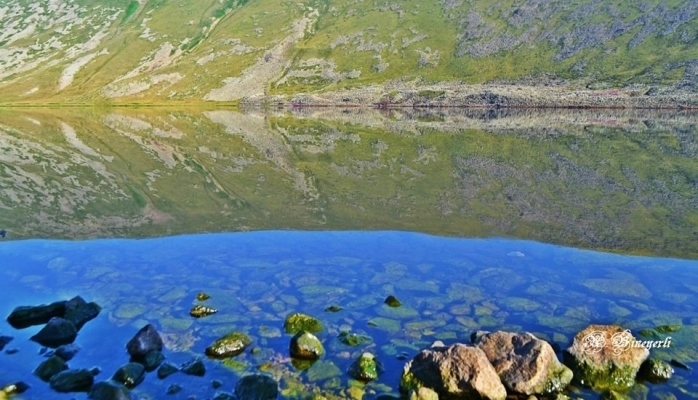
Qaragol Interrepublics State Reserve was set up with the decision of the Council of Ministers dated November17, 1987. Garagol State …

The idea of establishing Aghdam Bread Museum, which is considered to be the second in the world after the Zurich …
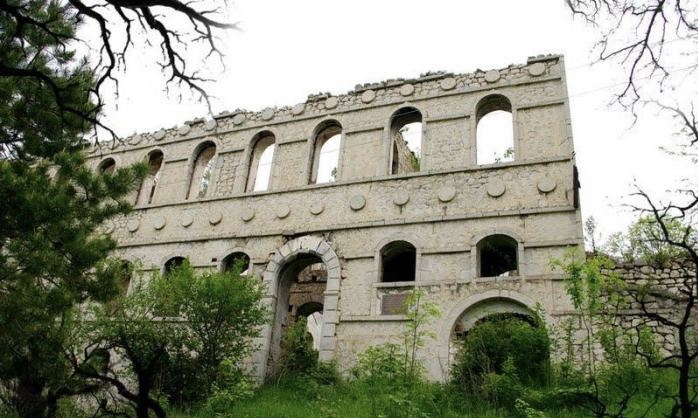
The Khurshudbanu Natavan’s House is a historical and architectural monument of the 18th century located in the city of Shusha. …

Museum Mausoleum Complex of Molla Panah Vagif is located in Shusha, Azerbaijan. It was built in honor of Molla Panah …
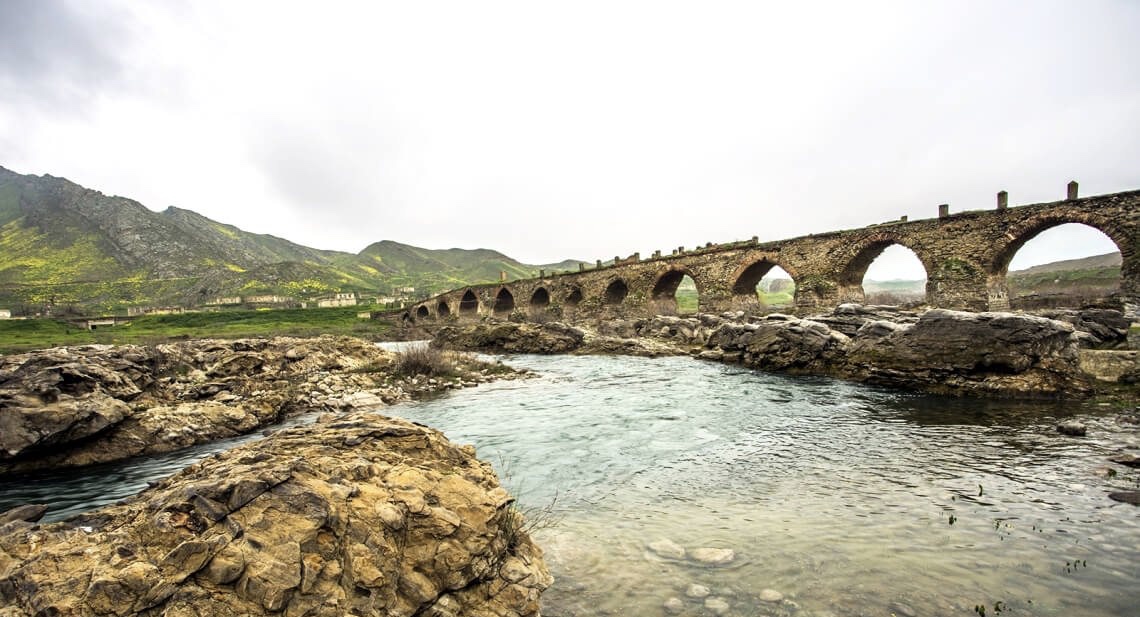
The Bridge belongs to the Arran architecture school. The first written source that mentioned the 15-arched Khudafarin Bridge belongs to …
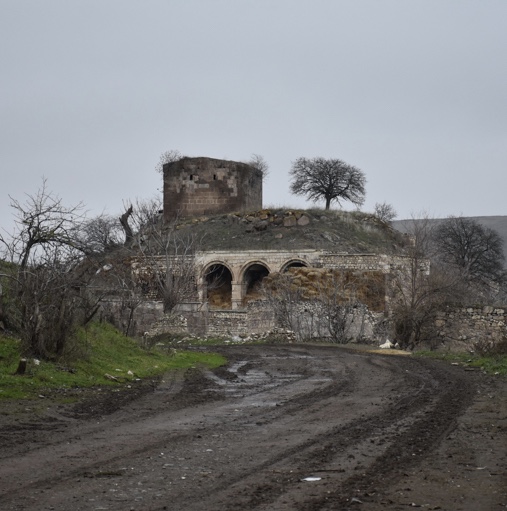
Garghabazar Caravanserai was built in 1681 at the hillside, in the center of Garghabazar village of Fuzuli district, 8 km …
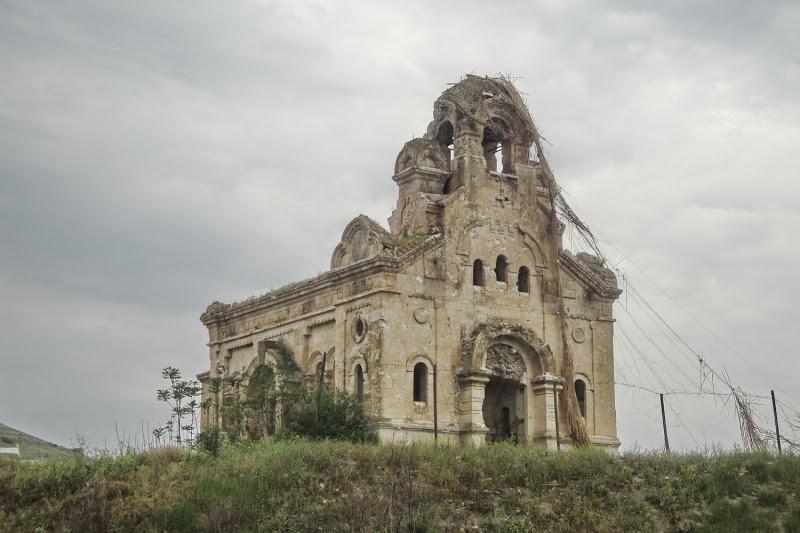
Armenia’s vandalism in Nagorno-Karabakh and seven surrounding regions affected not only the historical, cultural, and religious heritage of Islam but …

Jabrayil History-Ethnography Museum has been operating since 1953. Archaeological and ethnographic materials belonging to the history of the region, textiles, …

Khudavang, or Dedeveng, Monastery Complex is located in the Vang village of Kalbajar District, on the left bank of Tartar …

“The 19th century Aghdam Juma Mosque is perhaps the only structure that has withstood the years of neglect since the …